Have you ever been rushing through an airport, maybe a little stressed about making your flight, and spotted a serious-looking dog and handler team? ✈️🐕…
Ever wondered what those amazing pups are really doing?
Well, get ready to be impressed!
These aren’t just any dogs.
They are highly trained explosive detection canines working hard to keep us all safe when we travel.
Let’s dive into the fascinating world of TSA airport dogs and see what it takes for them to get those important jobs! 🛬
From Playtime to Protection: The Puppy Boot Camp Begins ➡️👮♂️
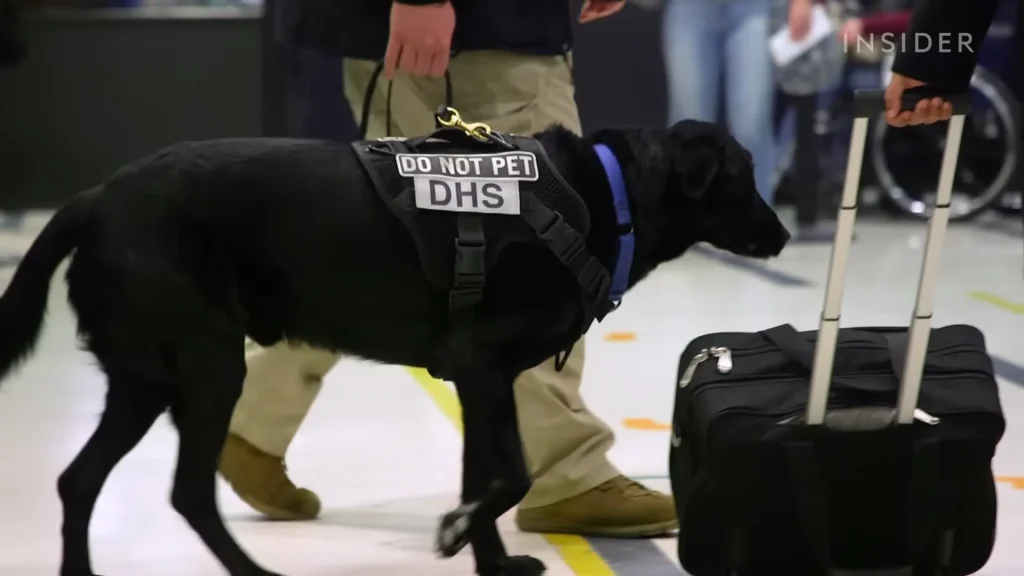
Imagine puppy training… but on a whole other level!
Before these incredible dogs even set paw in an airport, they go through an intense 16-week training program at the TSA Canine Training Center.
Yep, it’s like doggy boot camp!
This isn’t just about sit and stay; it’s about mastering crucial skills in realistic mock-up airplanes and airport terminals.
Think about it… these pups are learning techniques that are literally vital for national security. 🤯
Every year, hundreds of dogs and their handlers graduate from this program, ready to become part of the TSA’s nationwide canine team.
More Than Just a Sniff: Unleashing a Dog’s Superpower 👃🦸
What makes these dogs so special?
Well, it’s their noses, of course!
But it’s more than just a good sniff…
As Zebulon Polasek from the TSA Canine Training Center says:
“There is nothing more effective out there in all of TSA’s arsenal. A well-trained dog team is truly a force multiplier that really combats terrorism.“
That’s a powerful statement, right?
There are over 1,000 of these amazing TSA canine teams working across the country, and they are a truly invaluable asset.
Tapping into Natural Talent: Making it a Game 🎾 … with a Purpose!
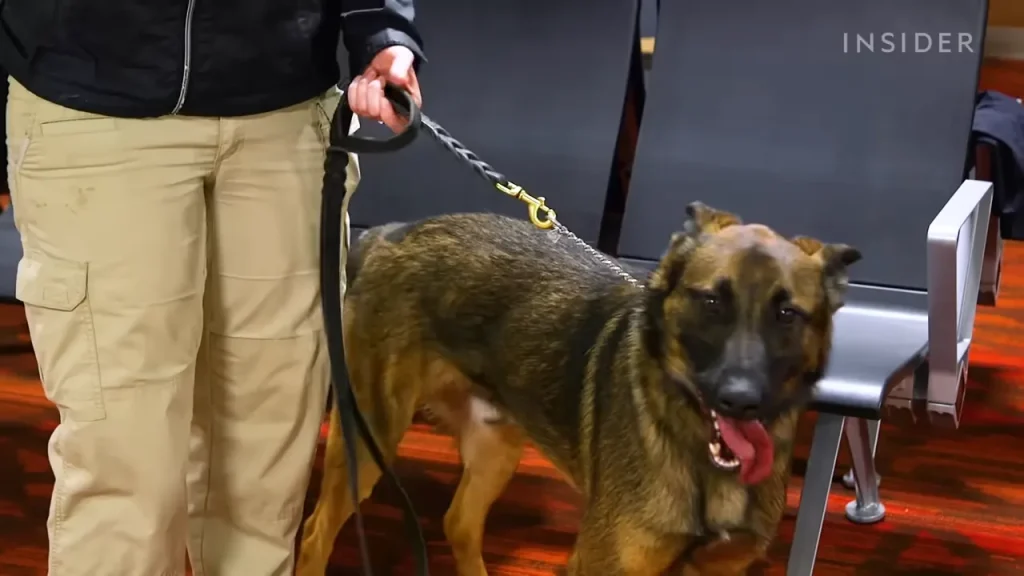
So, how do you train a dog to detect explosives?
It all starts with play!
Trainers tap into a dog’s natural instincts and incredible sense of smell.
They begin by teaching the dogs to search for their favorite toy.
Think squeaky balls, fluffy toys… whatever gets their tails wagging! 🐶
As Kevin Pitre, a trainer, enthusiastically says, “Ooh, you got it! Good man.“
It’s all about drive and reward.
The dogs want that toy, and that drive is what trainers use to shape their search behavior.
It’s pretty clever when you think about it… making serious detection work feel like a fun game!
Breed Stars: The Top Dogs for the Job 🌟
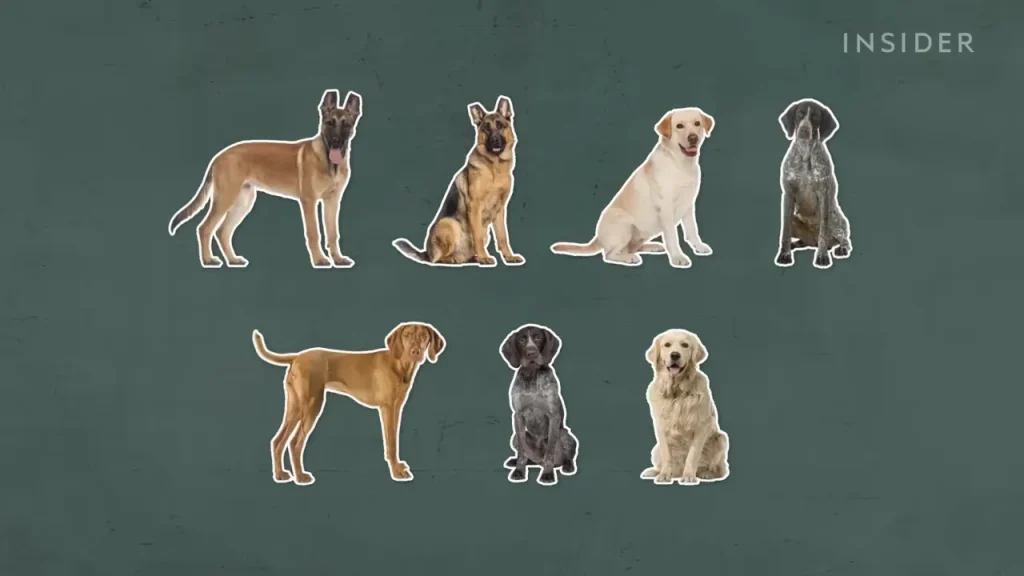
Ever wondered what breeds are best suited for this important work?
Over the years, the TSA has discovered some breeds are just naturally gifted at explosives detection.
These include breeds like Belgian Malinois, German Shepherds, Labrador Retrievers, German Shorthaired Pointers, and Vizslas.
These breeds have the perfect mix of intelligence, trainability, and that super-powered sense of smell.
Speaking of Labradors, my own black lab, Winston, is a scent-hound extraordinaire!
Although Mr Moose, his favorite toy, doesn’t smell of explosives (thankfully! 😅), Winston uses his amazing nose to find all sorts of interesting things on our walks… mostly food, if I’m honest! 🍖
From Toys to Triggers: Introducing the Real Deal ☢️
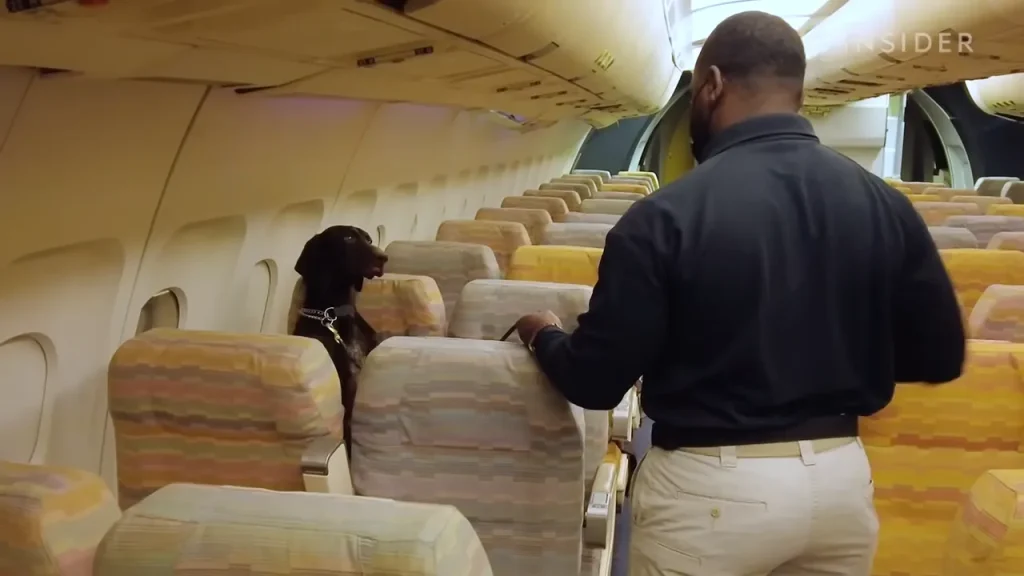
As training progresses, the game gets a little more serious.
Trainers introduce training aids that contain real explosive materials.
Don’t worry, it’s all done safely and in controlled environments!
The dogs learn to associate the specific odor of explosives with the reward of their toy.
It’s all about conditioning.
As John Peeler explains, “We condition them that this piece that you’re looking for means a whole lot, and we use the toy to do that.“
Through repetition, the dogs learn to search for the odor itself, knowing that finding it means playtime! 🎉
The “Passive Response”: Subtle Signals, Big Discoveries 🤫
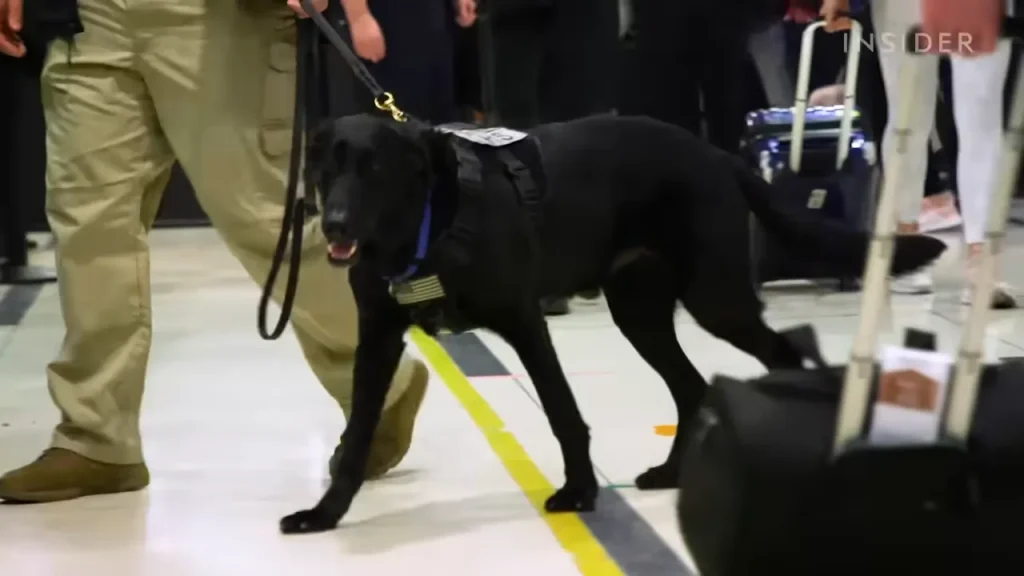
Instead of barking or pawing, TSA dogs are trained to give a “passive final response.”
This means when they detect an explosive odor, they are trained to either sit or lie down calmly.
This subtle signal is incredibly important in a busy airport environment.
It’s all about focus and precision.
Think about it, a dog calmly sitting or lying down is a much clearer signal than excited barking in a crowded terminal!
It’s a testament to their incredible training and discipline. 👏
A Blast from the Past: The Program’s Powerful History 💥

Did you know the TSA Canine program has roots stretching back to 1972?
It all started with a bomb threat on a TWA flight.
Incredibly, a New York Police Department canine team, trained in explosives detection, happened to be at JFK airport that very day.
A dog named Brandy searched the plane and alerted to a briefcase… which turned out to contain a bomb set to explode just 12 minutes later! 🤯
Talk about a close call!
This event led President Nixon to create the FAA Explosives Detection Canine Team, which eventually became part of the TSA after the 9/11 attacks.
This program has grown and evolved over the years, constantly adapting to new threats and technologies.
Always Evolving, Always Alert: Training for Today’s Threats 🧐
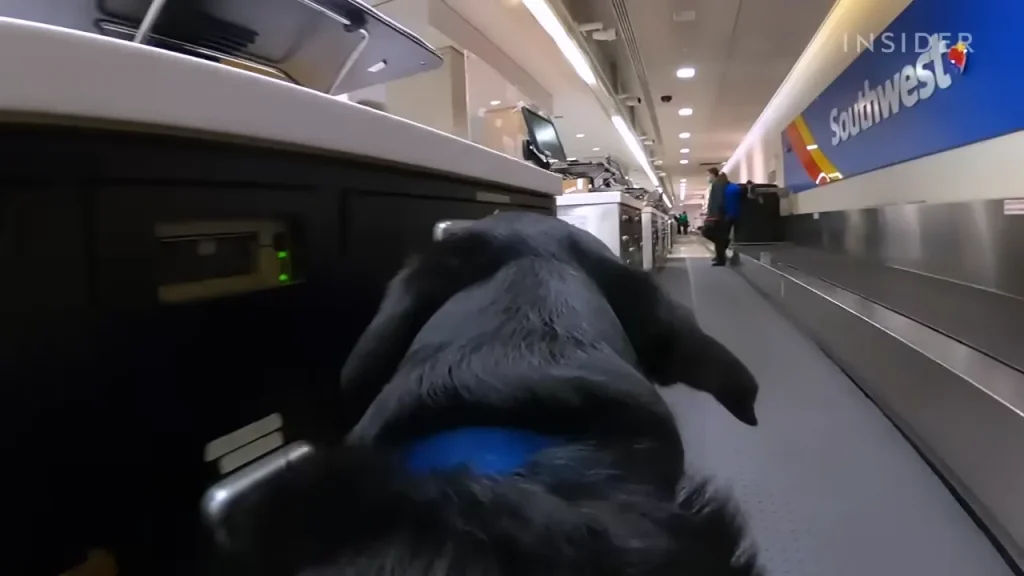
Today, TSA dogs are trained to detect dozens of different scents, based on the latest intelligence.
The specific details of what and how much they can detect are kept under wraps for security reasons, but you can bet these dogs are trained to be incredibly effective against a wide range of threats.
They are constantly honing their skills to stay one step ahead.
It’s a never-ending process of learning and adaptation.
Handler and Hound: The Perfect Partnership 🤝❤️
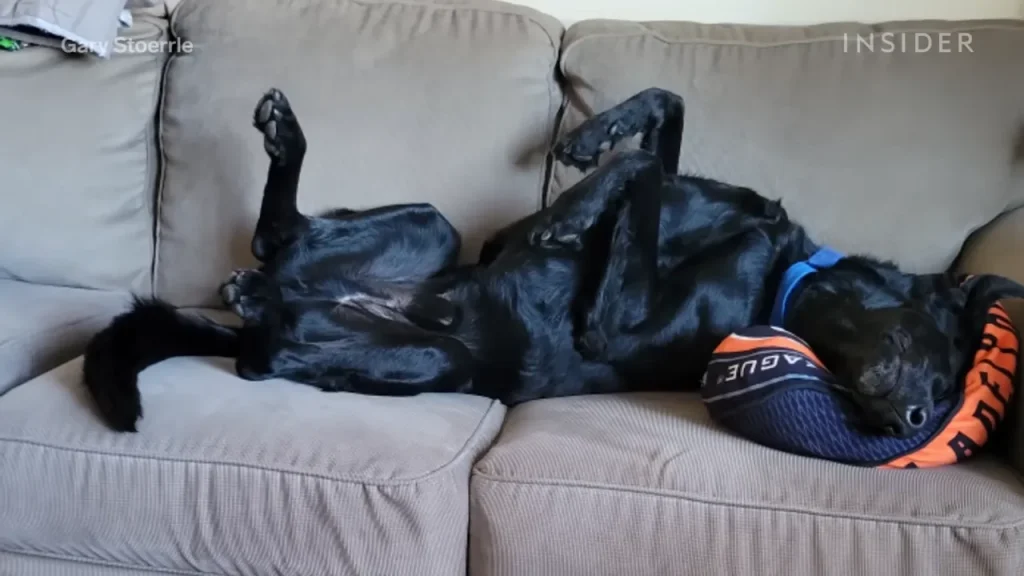
After all that initial training, the dogs are paired with their handlers.
This is where the team truly forms.
Handlers come from all over the country and undergo a rigorous selection process to join the program.
It’s competitive because it’s a huge responsibility!
Jessica Montgomery, a TSA handler, explains, “Seeing our dogs at our airport, what they were capable of doing, I was in awe.“
The handlers and dogs train together for several more weeks, learning to rely on each other and work as a seamless unit.
It’s not just about dog training; it’s about team training.
Putting it into Practice: Real-World Airport Scenarios 🎭
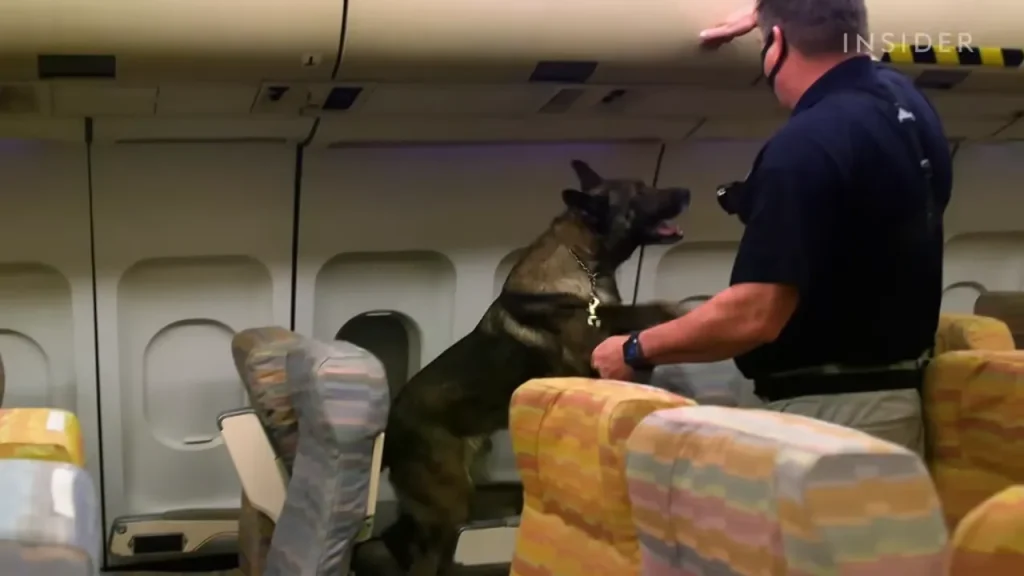
The final stage of training puts these canine teams in realistic airport scenarios.
Think actors playing passengers, mock terminals bustling with activity… It’s all designed to simulate the real-world pressures of a busy airport.
Handlers learn techniques like “cutting wakes,” where the dog moves through passenger lines to sniff for explosive odors.
Trainers watch closely, looking for the dog’s drive and the handler’s leash control.
It’s a delicate balance of letting the dog work while maintaining control and communication.
As trainer Robert Newsome emphasizes;
“…when you’re doing this type of training with the dog on a leash, it’s a balance of when to have control and when not to have control.“
Graduation Day and Beyond: Protecting Travelers Nationwide 🎓🥳
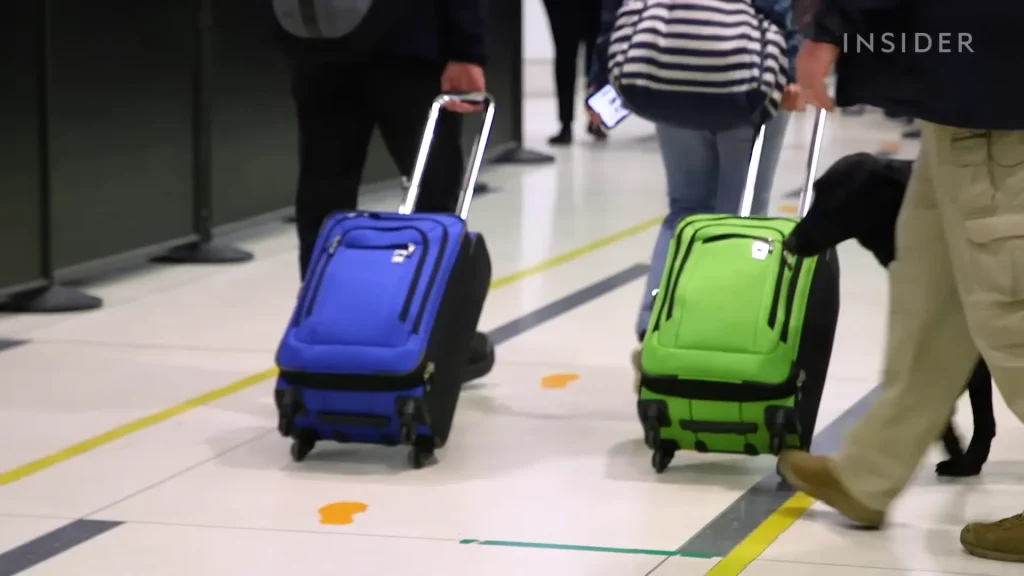
After months of intensive training, it’s graduation day!
Around 90% of canine teams successfully complete the program, which is an incredible achievement.
These teams are then deployed to airports and mass transit hubs across the United States, ready to put their skills to work.
Think of Gary Stoerrle and Bak, who graduated in 2016 and have been working at Philadelphia International Airport ever since.
Gary describes Bak as a “goofball” and a “character” who “loves people” and “loves the job.”
It’s clear the bond between handler and dog is something truly special and essential for their important mission.
They aren’t just working dogs; they are partners, protectors, and part of a nationwide team dedicated to keeping us safe.
So next time you see a TSA canine team in the airport, give them a silent thank you for their incredible work! 🙏
They truly are heroes on four paws! 🐾❤️
- Secret to a Show-Stopping Maltese? Unleash Your Inner Groomer! – March 26, 2025
- 10 Hilarious Dog Memes You Need to See – March 24, 2025
- A New Leash on Life: Rocky the Gentle Giant Finds His Forever Home – March 23, 2025

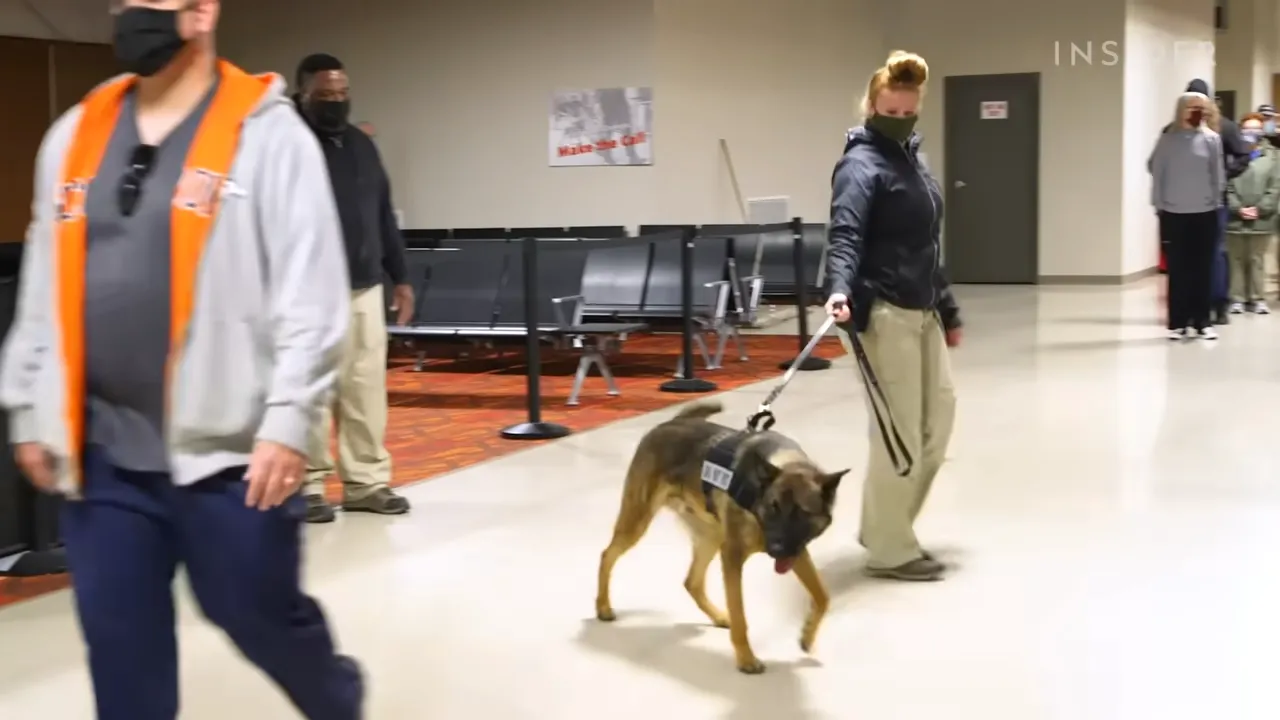
13 responses to “Paws on the Front Line: What Airport Explosive Detection Dogs Really Go Through”
achat kamagra acheter bon marche
generique kamagra pharmacie fed ex
order enclomiphene next day
ordering enclomiphene lowest price viagra
ordering androxal australia no prescription
buying androxal without prescriptions canada
best prices on generic flexeril cyclobenzaprine
order flexeril cyclobenzaprine cheap fast shipping
discount dutasteride uk meds
can you buy dutasteride in mexico
fildena no physician approval
buy fildena canada mail order
discount gabapentin canada with no prescription
order gabapentin generic from india
best itraconazole mail order
discount itraconazole generic new zealand
order staxyn generic uk next day delivery
purchase staxyn generic is it safe
ordering avodart usa mastercard
online order avodart cost tablet
discount rifaximin for sale usa
order cheap rifaximin online
how to buy xifaxan singapore where to buy
Order xifaxan online without a perscription
kamagra generická kanada
kamagra bez lékařského předpisu